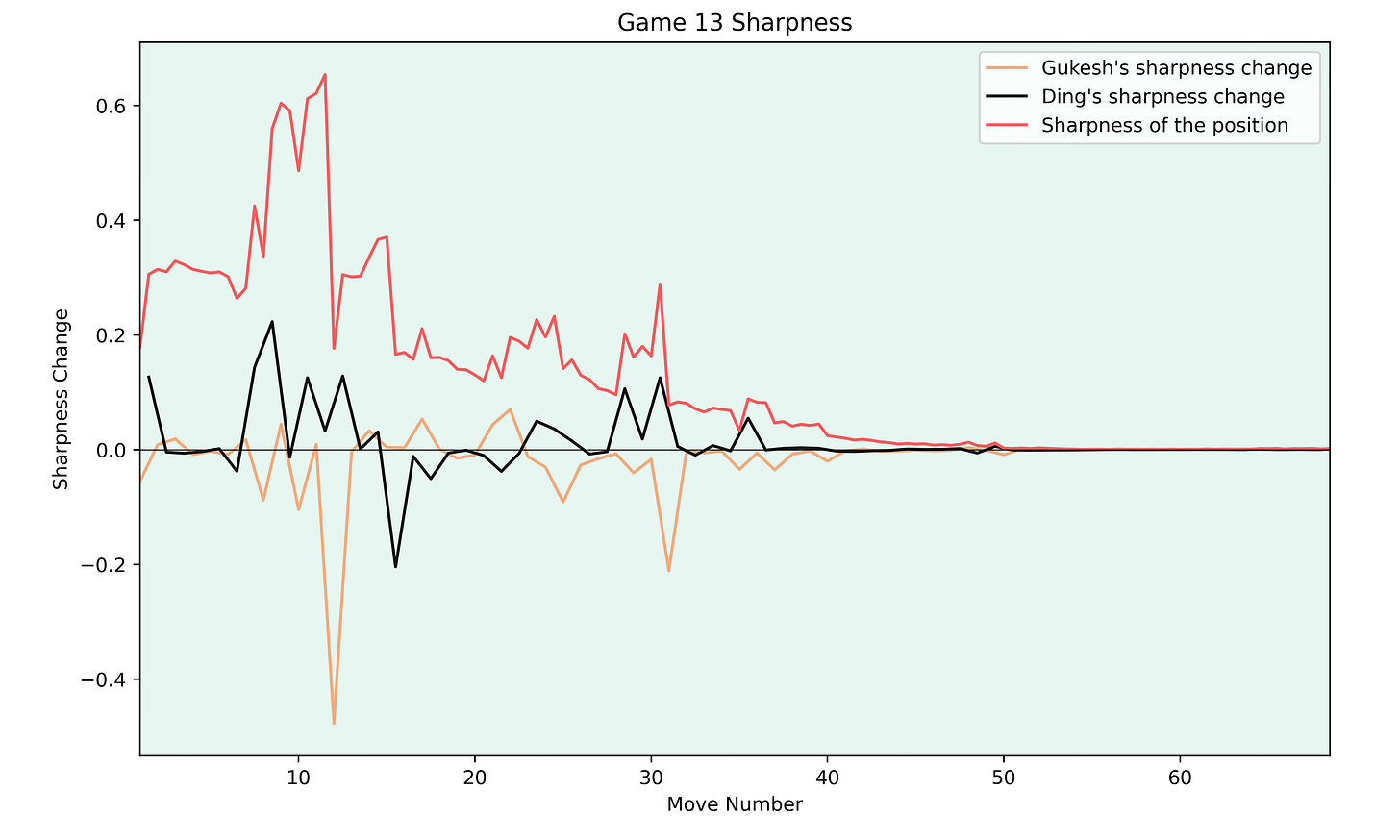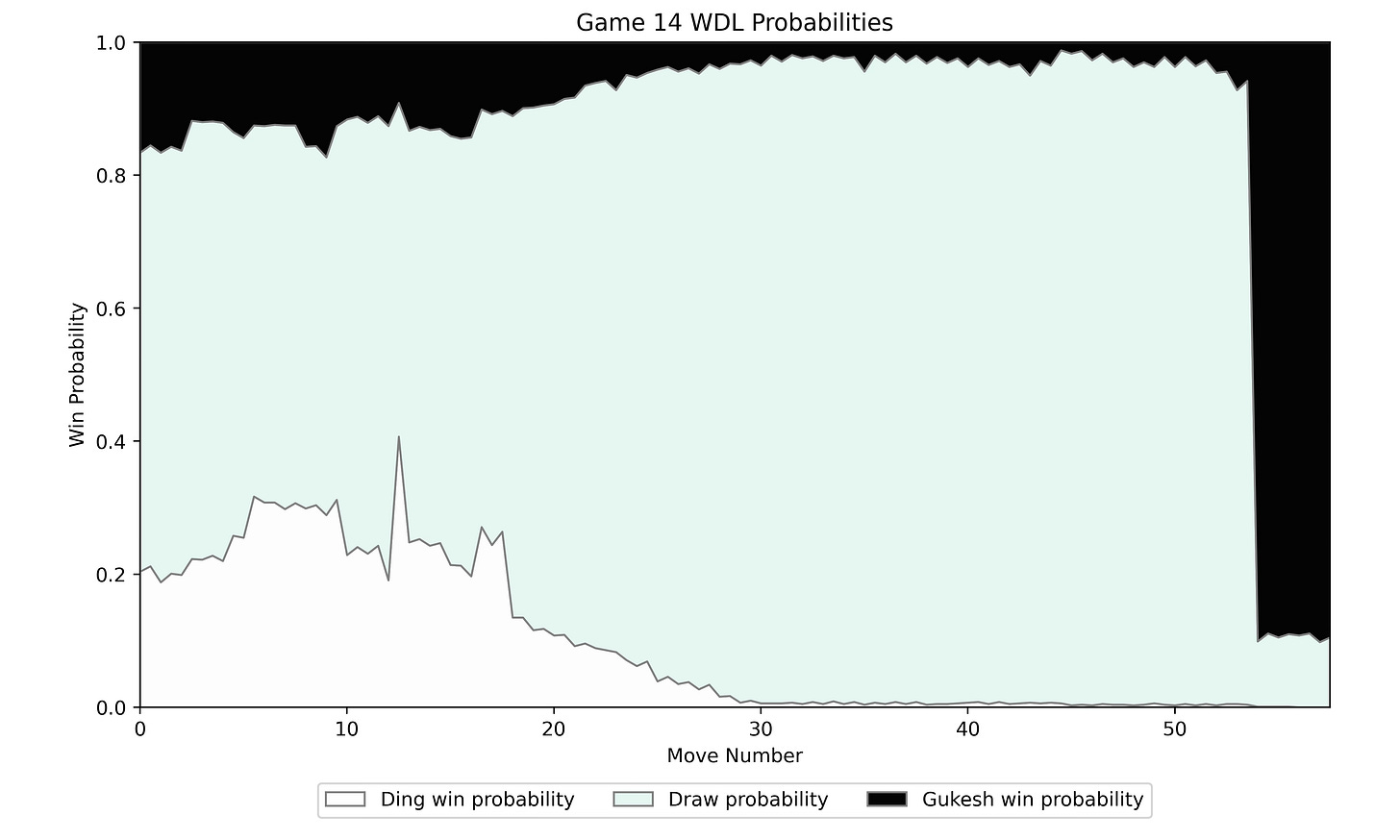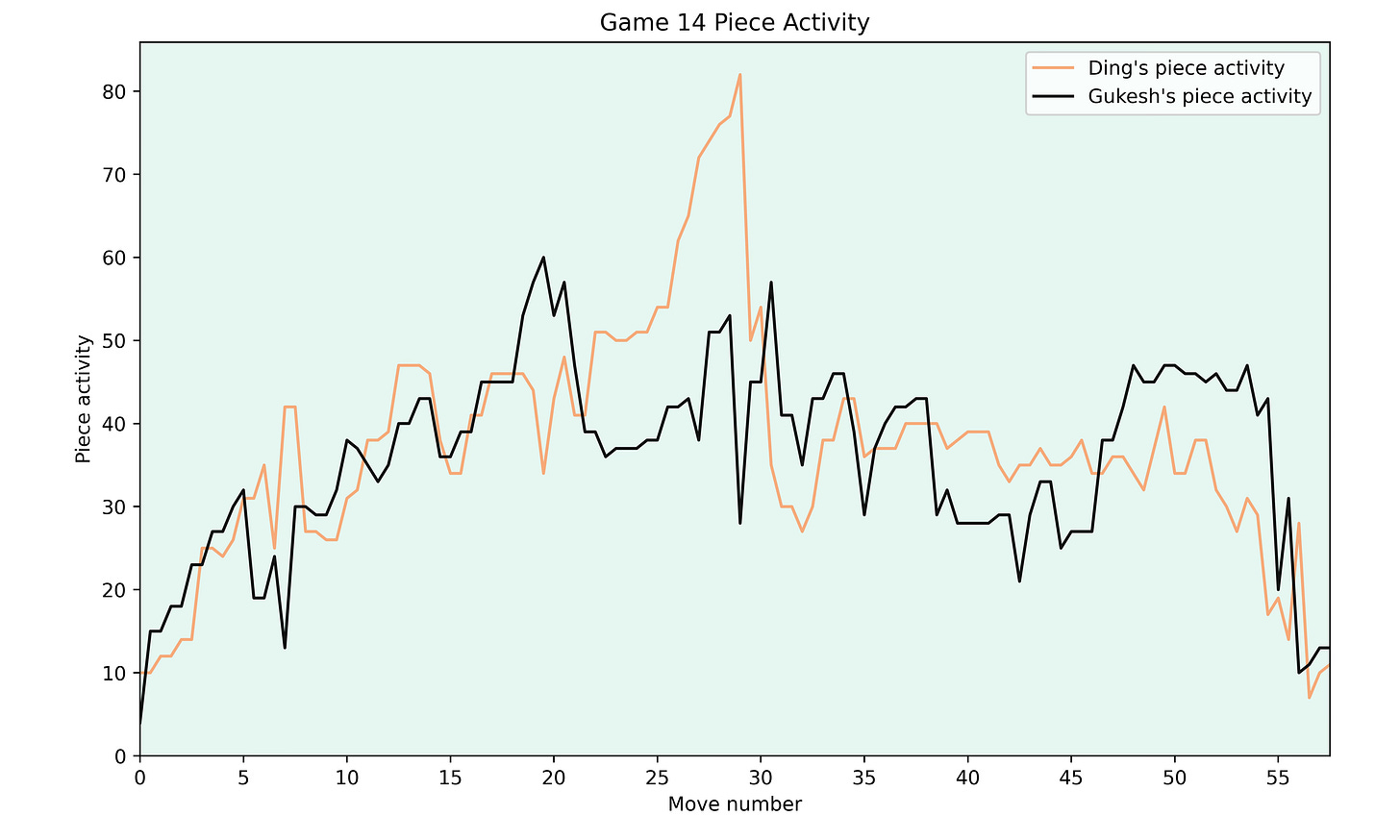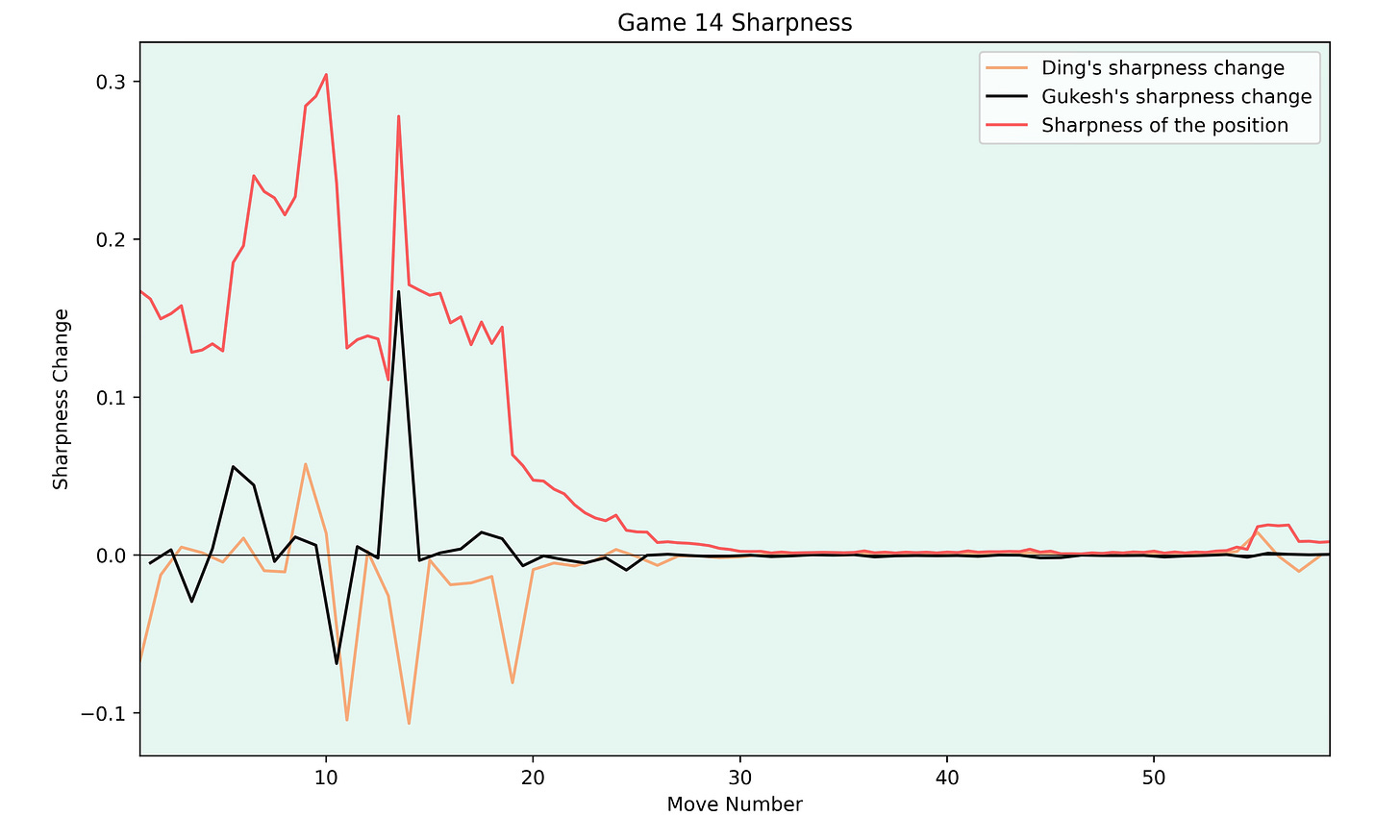The final two games of the world chess championship didn’t disappoint. Both were fighting games and the championship finished with a decisive result.
As always, I highly recommend checking out the annotations provided by Lichess.
Game 13
Game 13 was the final white game for Gukesh and it was very dramatic.
Gukesh played 1.e4 again and got a very good position in the French early on. After Ding made a mistake on move 30, Gukesh missed his chance to win the game. Afterwards, Ding defended very well and managed to reach a drawn rook ending a pawn down.
The piece activity highlights how difficult Black’s defence was.
From moves 30 to 50 Gukesh had much more active pieces and Ding was very cramped. It’s interesting to see that even after Gukesh missed the win, his pieces were very active. This might be a reason why he was tempted to go with the line he chose in the game.
The sharpness for this game was very high.
Early on LC0 gave big sharpness values over 0.6 but when Gukesh played 12.Nge2 instead of Qg4, the sharpness dropped to normal levels.
The clock times are very typical of the match.
Ding took a very long think early on, but then started to speed up. Gukesh caught up on time and both players used most of their time before move 40.
Game 14
Going into the final game, it was difficult to know what to expect. Until now, Gukesh always tried to push for a win but would he also try is luck in the final game?
Ding got a good position out of the opening and would have had an advantage if he played 14.Qe2 instead of 14.b3. Then the game was drawn according to engines, but Ding’s position was certainly unpleasant. He defended well until he blundered with 55.Rf2?? and Gukesh won the world championship.
The piece activity was roughly equal in the game.
Ding had a big spike in the piece activity just as he exchanged pieces on move 30. In the end Gukesh got more active which ultimately lead Ding to make the losing mistake with his bishop stuck on a8.
The sharpness for this game wasn’t too interesting.
The initial sharpness was very high but not much happened. Since the ending was an easy draw for LC0, the sharpness value is also very low even though it wasn’t so easy from a human perspective.
Both players were playing quite quickly in this game.
Ding didn’t have his customary 30 minute think in the opening so he had a lot of time left. But Gukesh was playing even faster, probably because his position was very comfortable.
Conclusion
This was certainly an unexpected end to the match!
I think that the 13th and 14th games show some of the limitations of engine analysis. While the WDL graph looks similar in both endgames, the 13th game was much easier to hold. But since both endgames are objectively drawn, it’s difficult to say with engines how good the winning chances for one side actually are.
I’ll write one final post summarising the whole match with some different stats and graphs. I hope you’ve enjoyed the engine insights I shared about the individual games.












Thanks for your analysis.